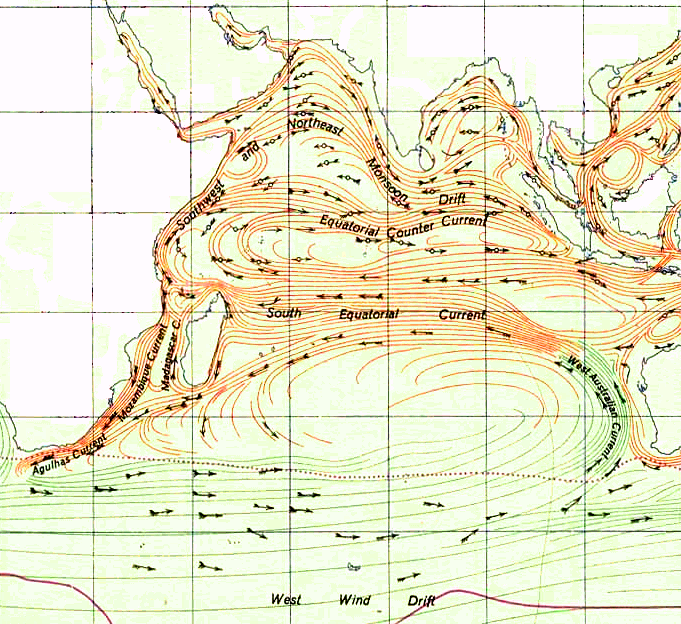Miles Lacey
 Archmage
Archmage
At the end of last year I dumped my work in progress. I liked the basic storyline but the worldbuilding aspects just didn't do it for me.
What I have in mind is an island chain made up of islands with the same topography as Sakhalin, Japan and Taiwan stretched out between the southeast coast of Madagascar and western Australia.
The key things I would be interested in knowing would be:
1. What physical characteristics would the people of such islands have?
2. How densely populated would such an island nation be? I strongly suspect that the population of these islands would be a fraction of those who live on the coasts of eastern Africa and South Asia.
3. What crops, livestock and foods could be produced here?
4. What would the climate be like? I envisage a very cold and hostile climate on the parts facing Antarctica and a warmer (temperate?) climate on the parts facing away from Antarctica.
5. Would there still be monsoons in the Indian Ocean? If so, would they be more powerful, less powerful or about the same?
Any feedback would be welcome.
What I have in mind is an island chain made up of islands with the same topography as Sakhalin, Japan and Taiwan stretched out between the southeast coast of Madagascar and western Australia.
The key things I would be interested in knowing would be:
1. What physical characteristics would the people of such islands have?
2. How densely populated would such an island nation be? I strongly suspect that the population of these islands would be a fraction of those who live on the coasts of eastern Africa and South Asia.
3. What crops, livestock and foods could be produced here?
4. What would the climate be like? I envisage a very cold and hostile climate on the parts facing Antarctica and a warmer (temperate?) climate on the parts facing away from Antarctica.
5. Would there still be monsoons in the Indian Ocean? If so, would they be more powerful, less powerful or about the same?
Any feedback would be welcome.

 Myth Weaver
Myth Weaver
 Troubadour
Troubadour Auror
Auror